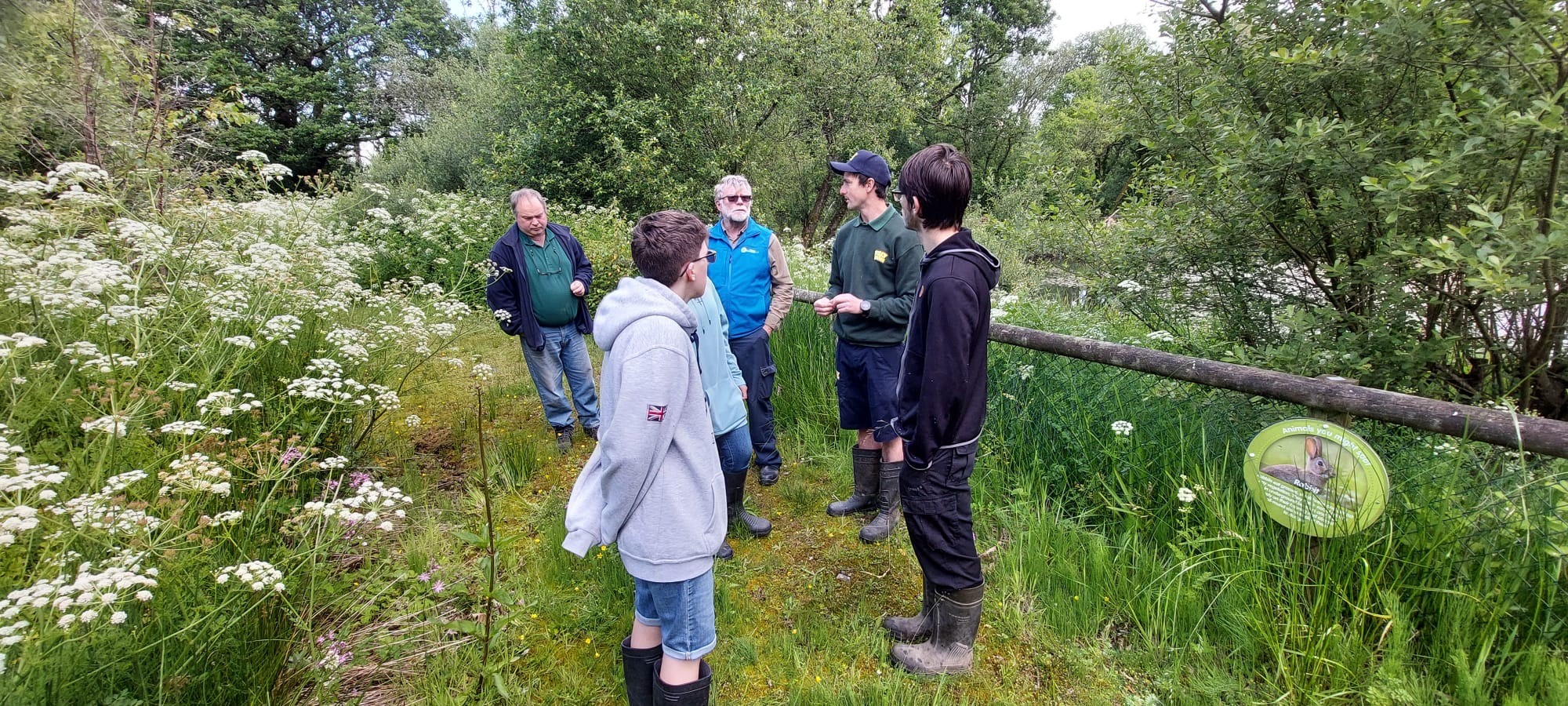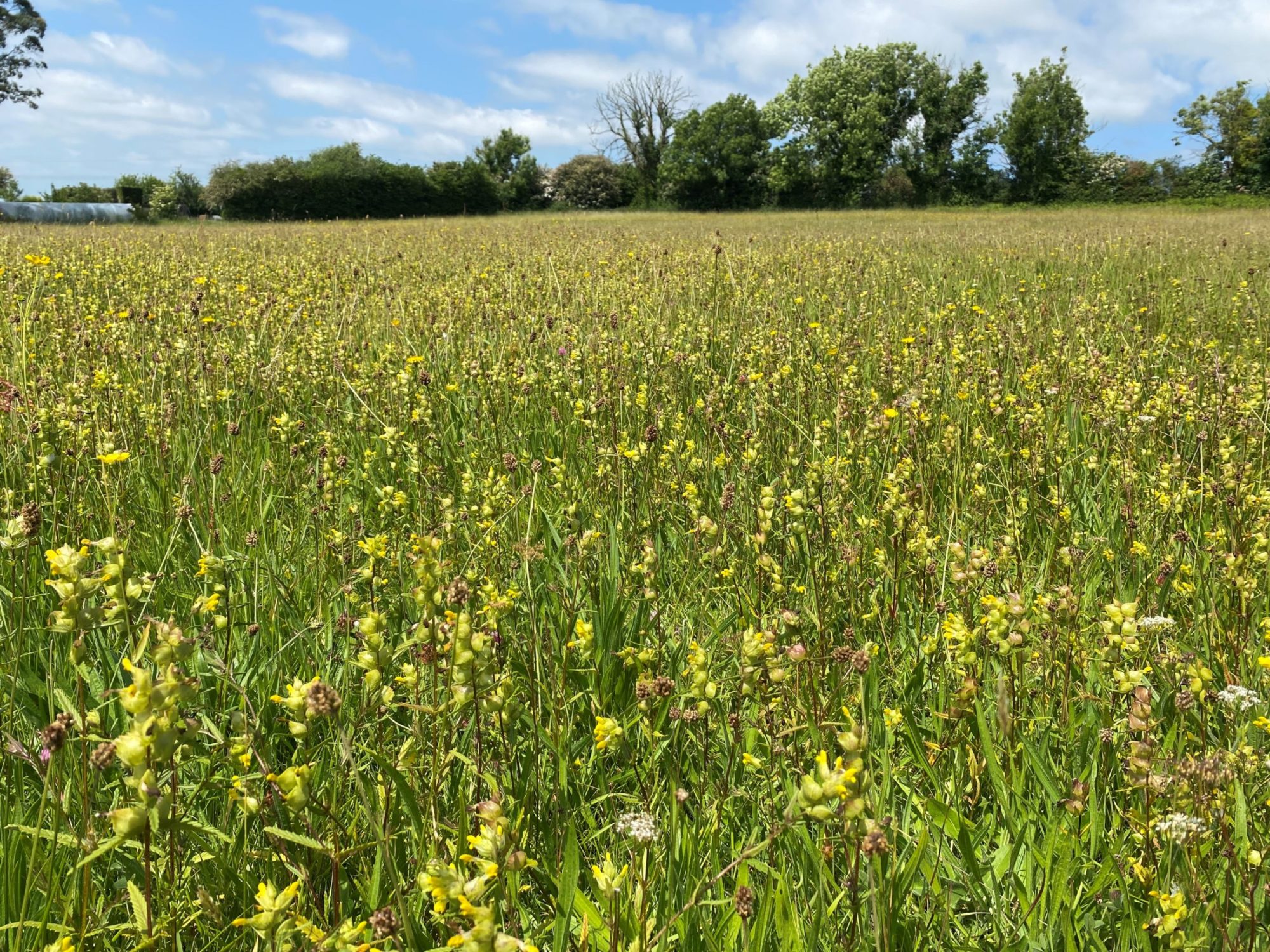Pembrokeshire College students help record wildlife
We’ve been busy recording wildlife in our streams and hay meadows.
The countryside management and animal care students and lecturers at Pembrokeshire College recently joined our conservation officer, Jack, to record wildlife in the stream and in one of our hay meadows.
A technique known as kick-sampling was used to collect and observe the creatures that were lurking beneath the stream water. A net is held in the water downstream, whilst the students each took a turn to kick and disturb the gravel upstream to release aquatic insects from their secret hiding spots. Counting the number of species can give us an indication if the stream is in a healthy condition.
The most common types found are river fly larvae, these tiny creatures are 5-30mm long and are the early forms of river flies before they metamorphosise; just like frogs and butterflies do. These bugs are the lifeblood of streams and rivers and the start of the food chain. They are essential food for fish and birds, which in turn feed other river dwellers like kingfishers and otters.
The students managed to observe and identify nine different types such as dragonfly larvae, diving beetle larvae, freshwater shrimps, stonefly larvae, olive larvae, pond snails, flatworms and pond skaters. Using an ID chart, they explored the differences between all the insects, counting the number of tails and gills present.
The students were most impressed with the cased caddis fly larvae, these construct and live within a protective shell made out of gravel, twigs or plants! The hay meadows were also surveyed for plant life, giving students an opportunity to look at the different techniques.
The survey was carried out as part of the nationwide ‘Big Meadow Search’ and all the data collected was put into the online database to log the plant species found in the meadow.
With 97% of wildflower meadows lost since the 1930’s it is more important than ever to record what areas still exist. You can join in the Big Meadow Search too by identifying the native plants you find in verges, church yards or meadows, find out more information here.
Thank you to all the students for their help in logging the native wildlife that live alongside us at Folly Farm.



